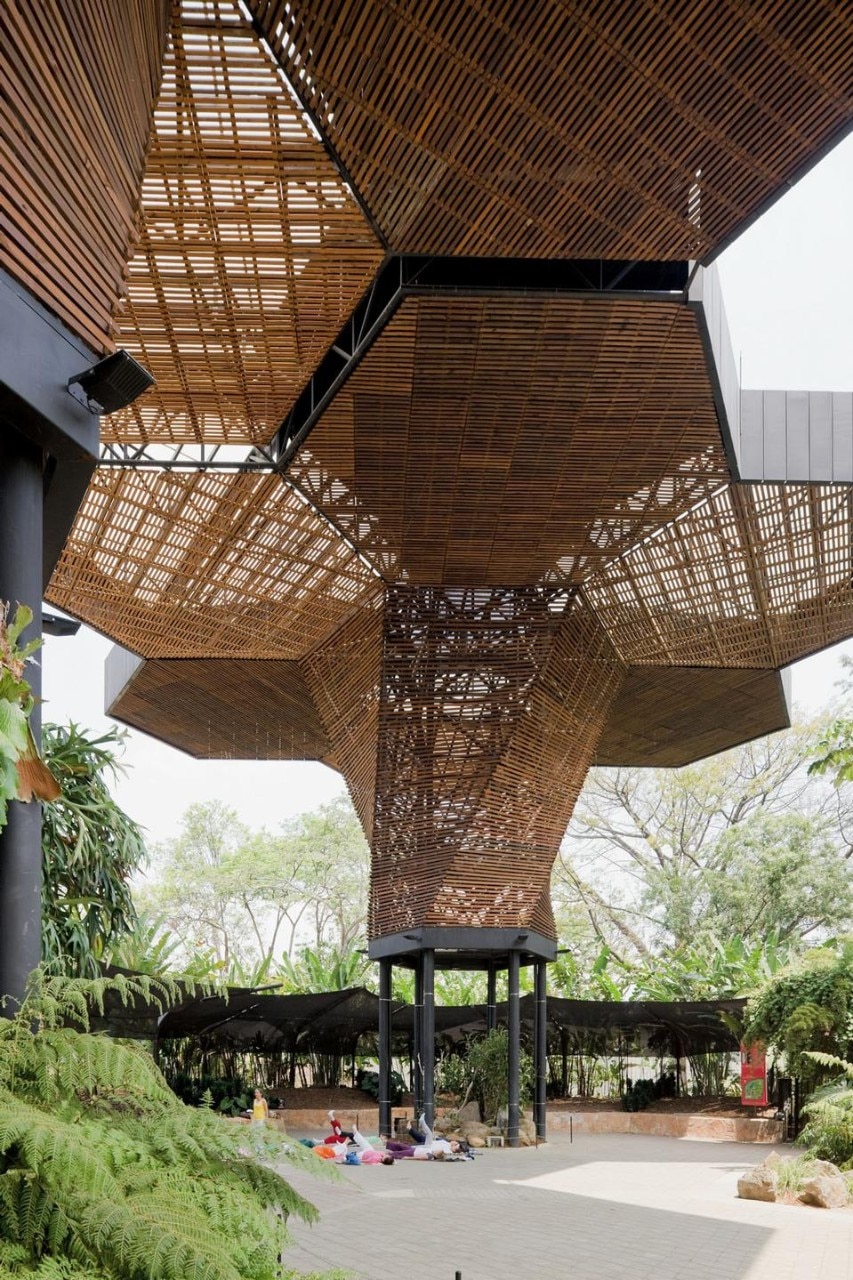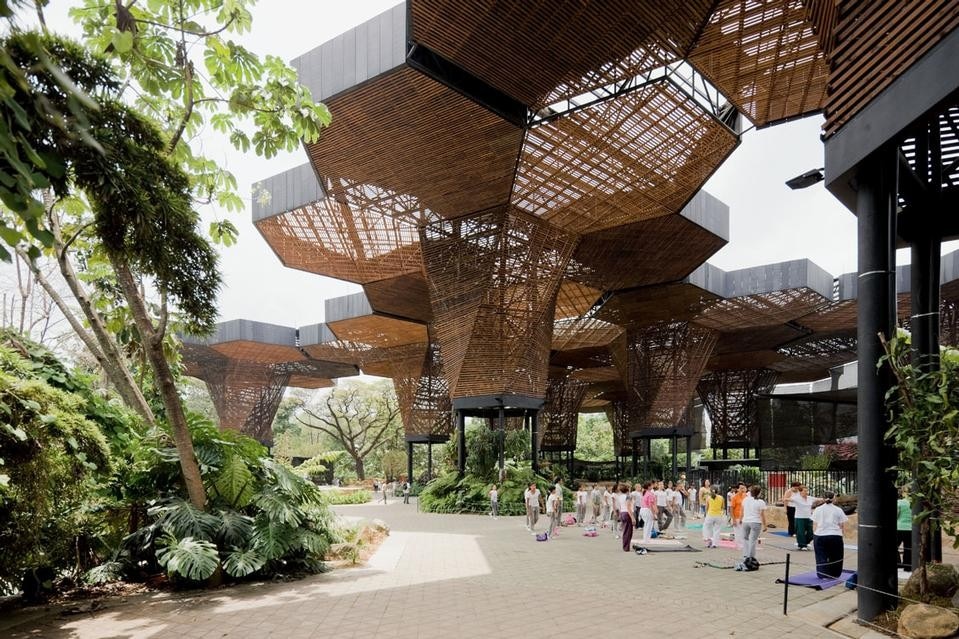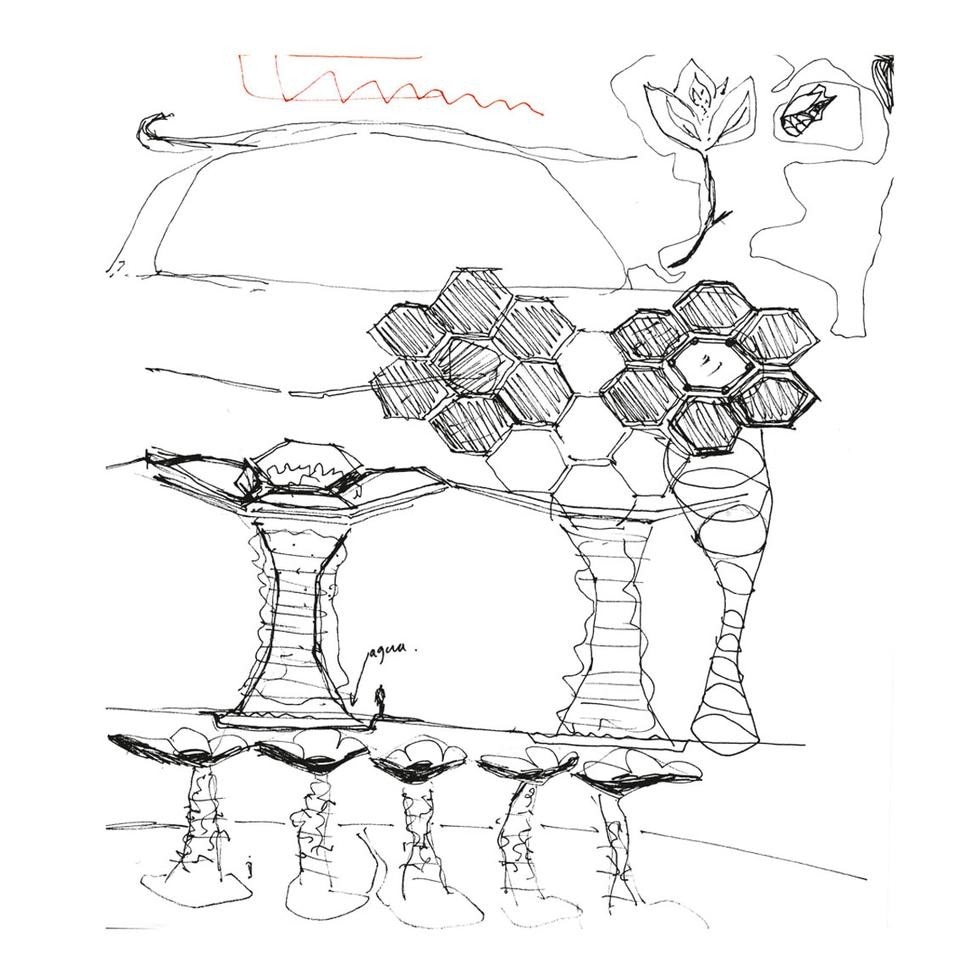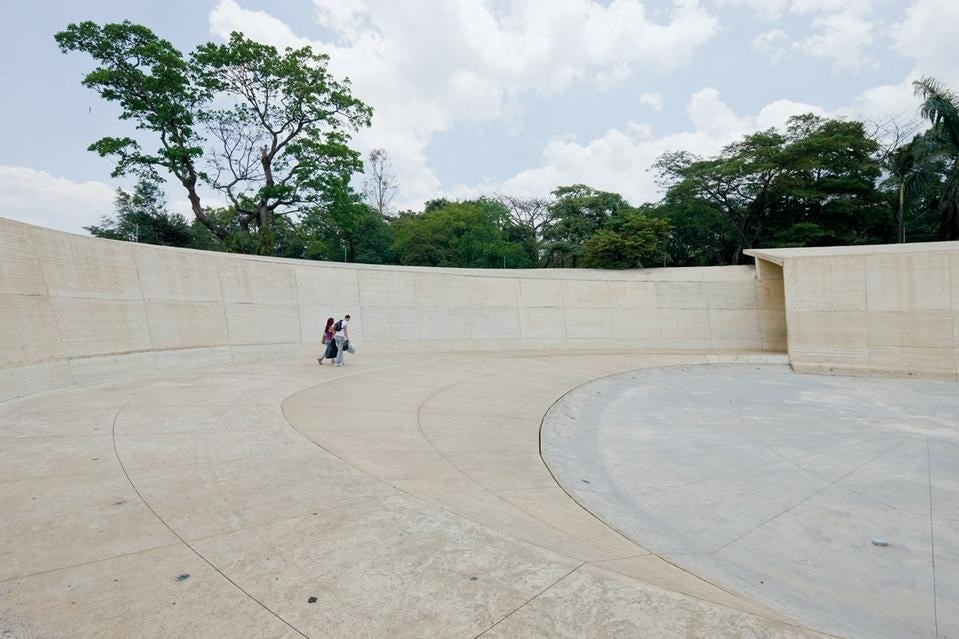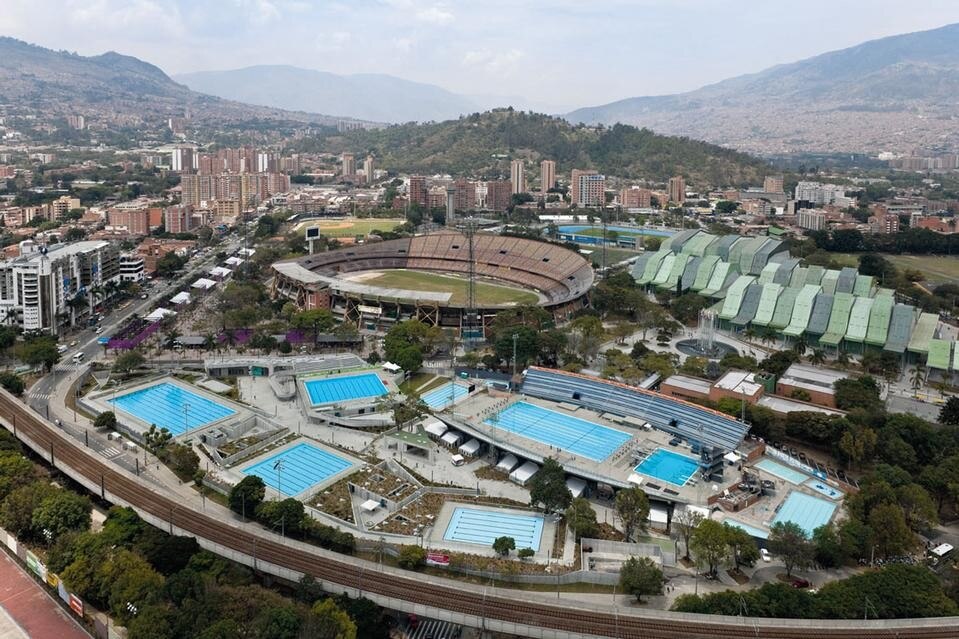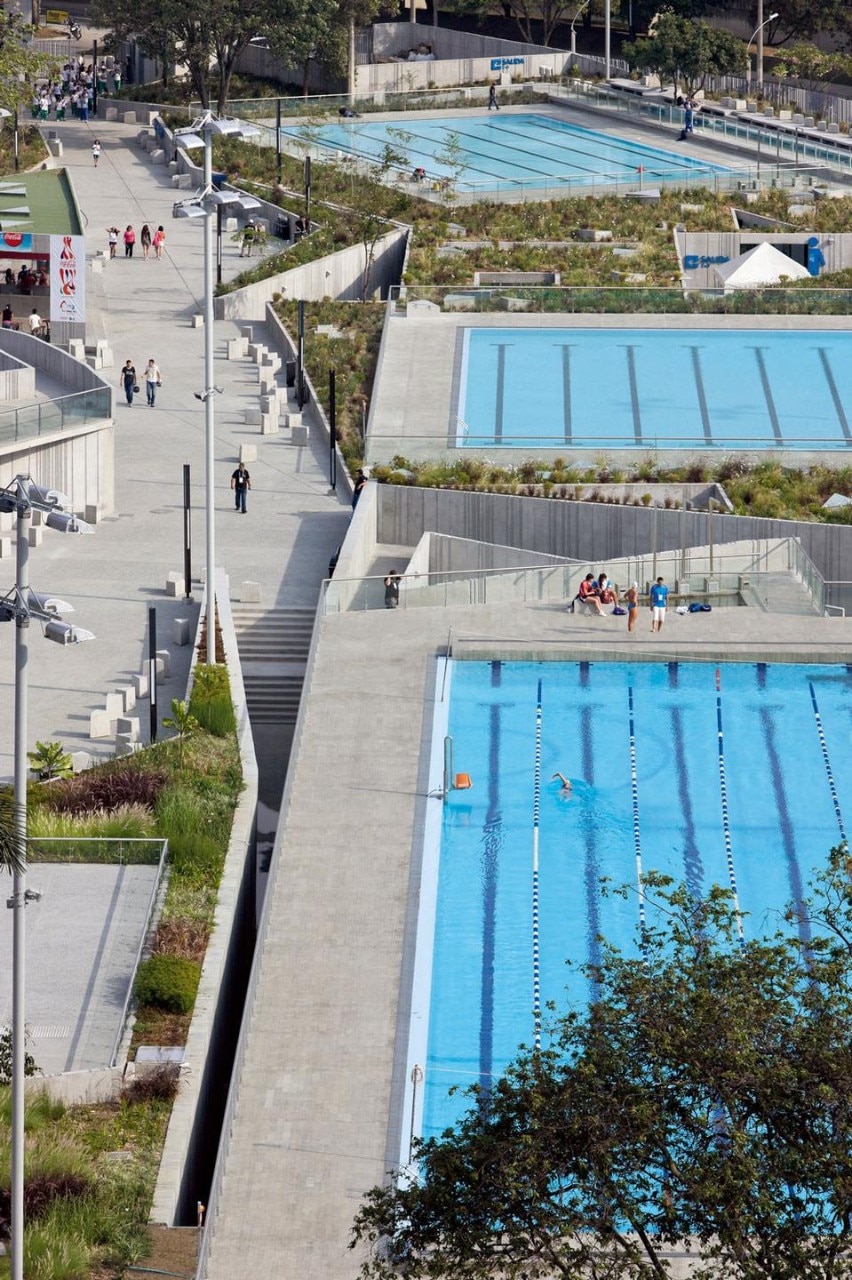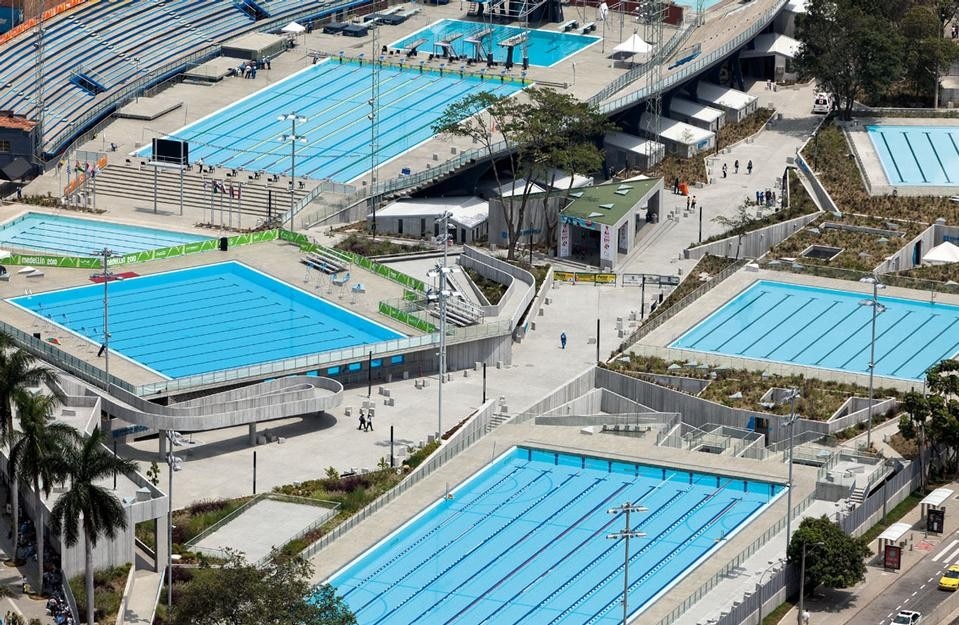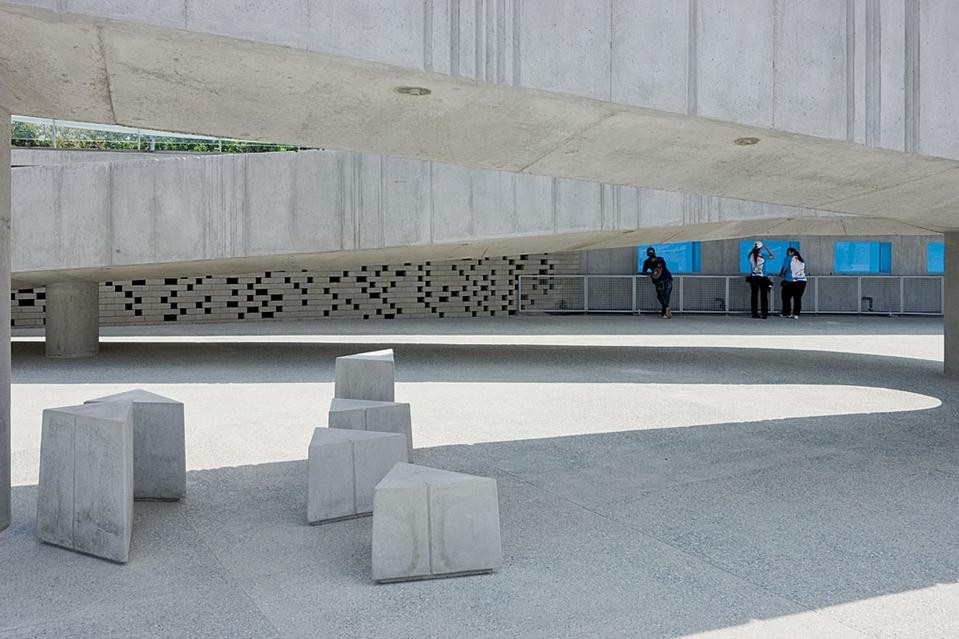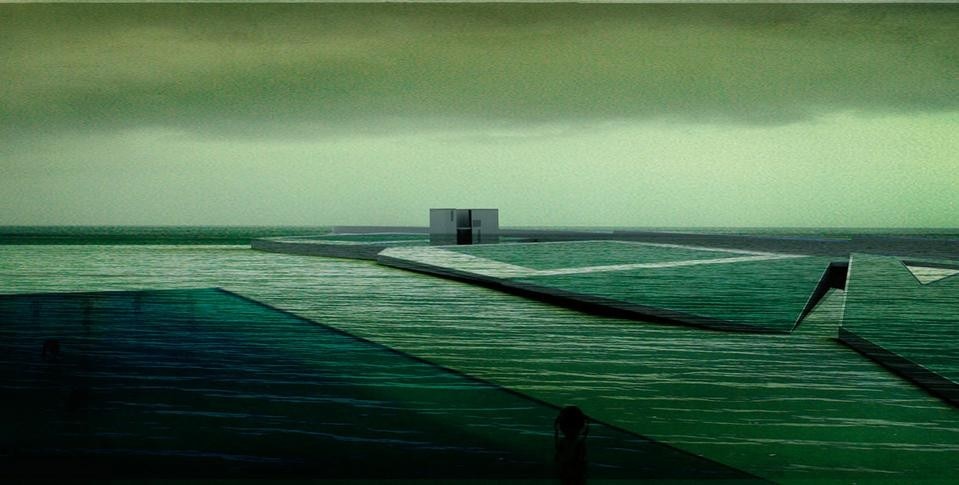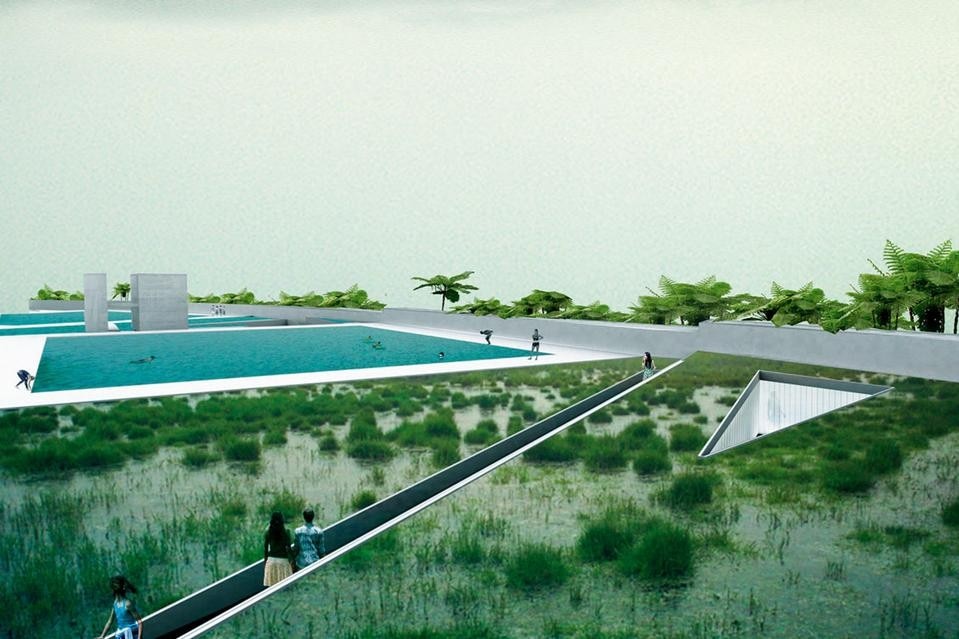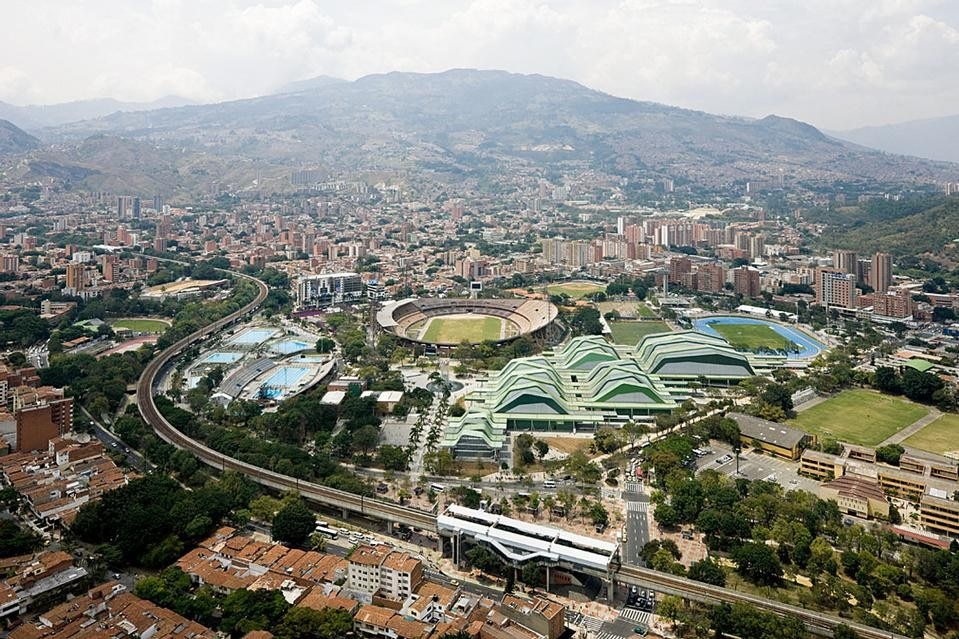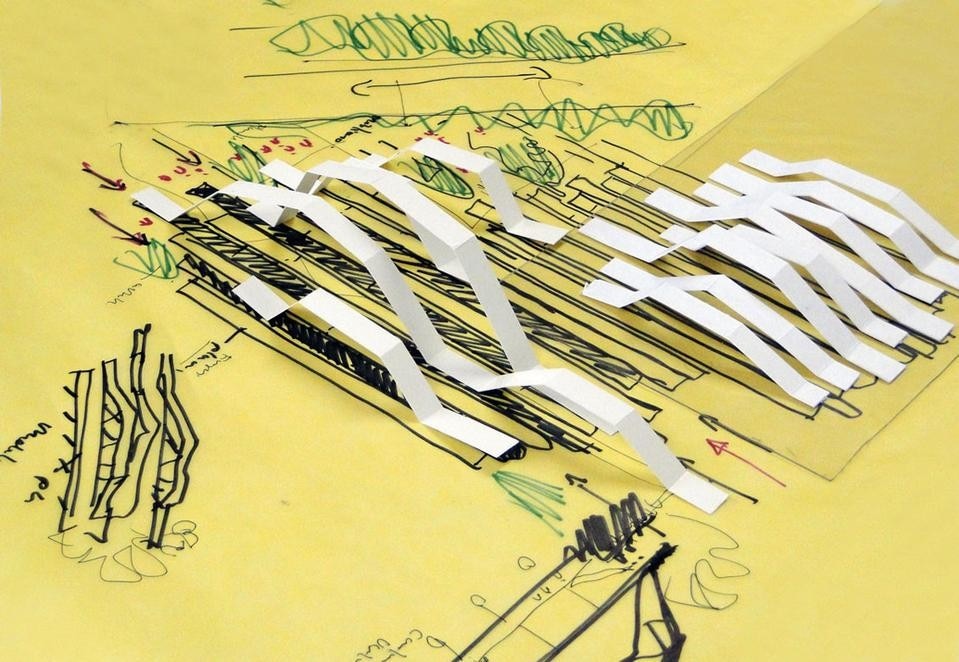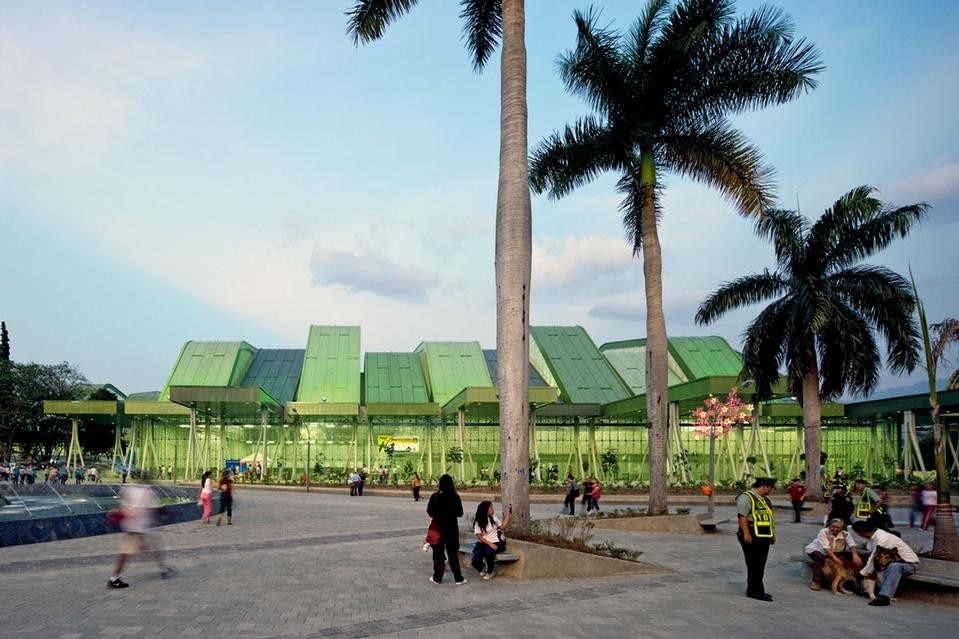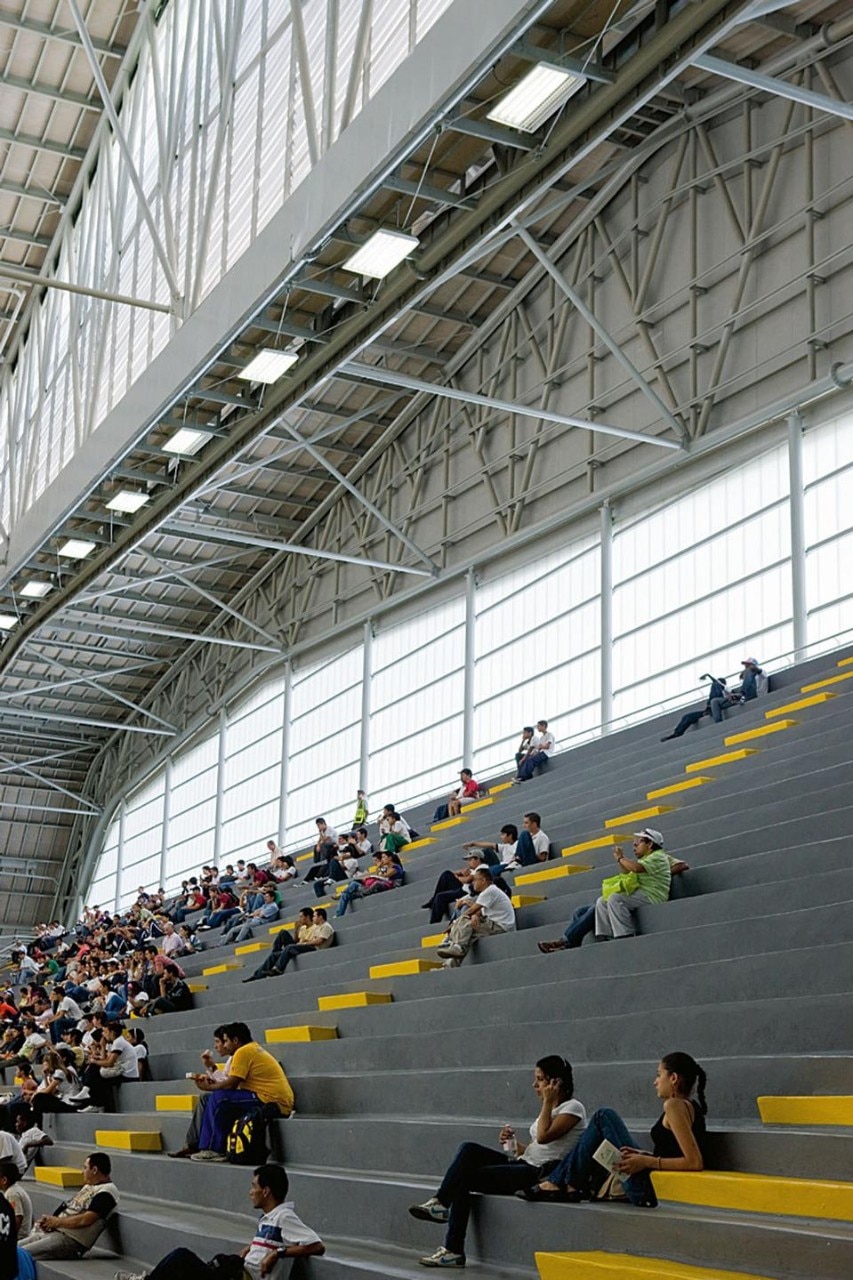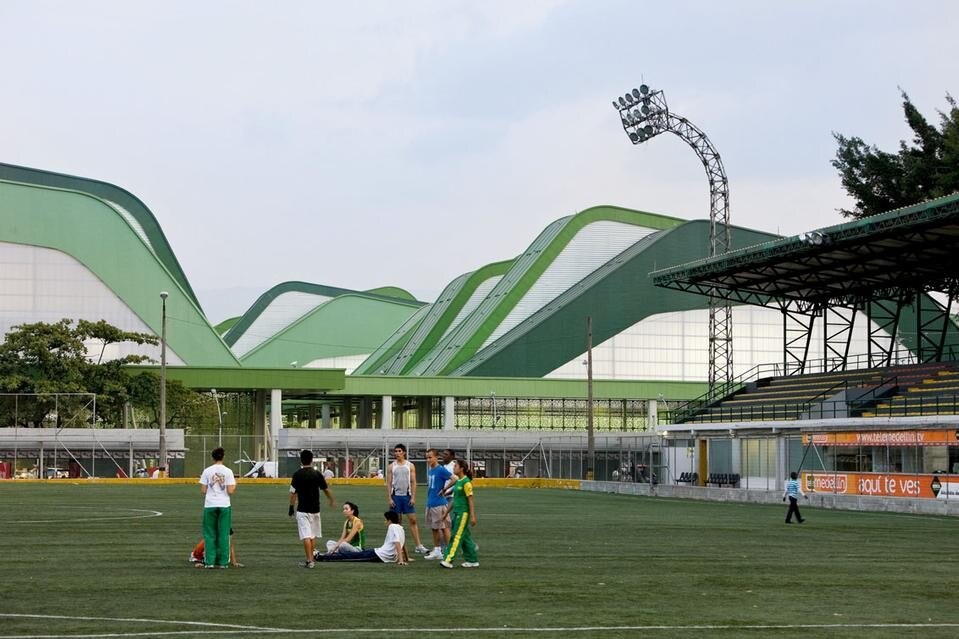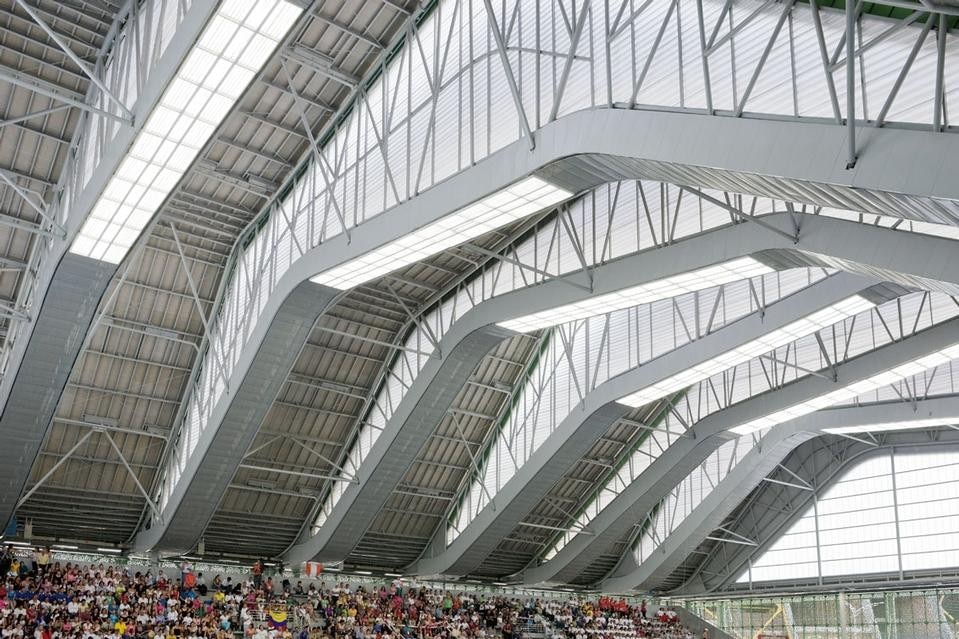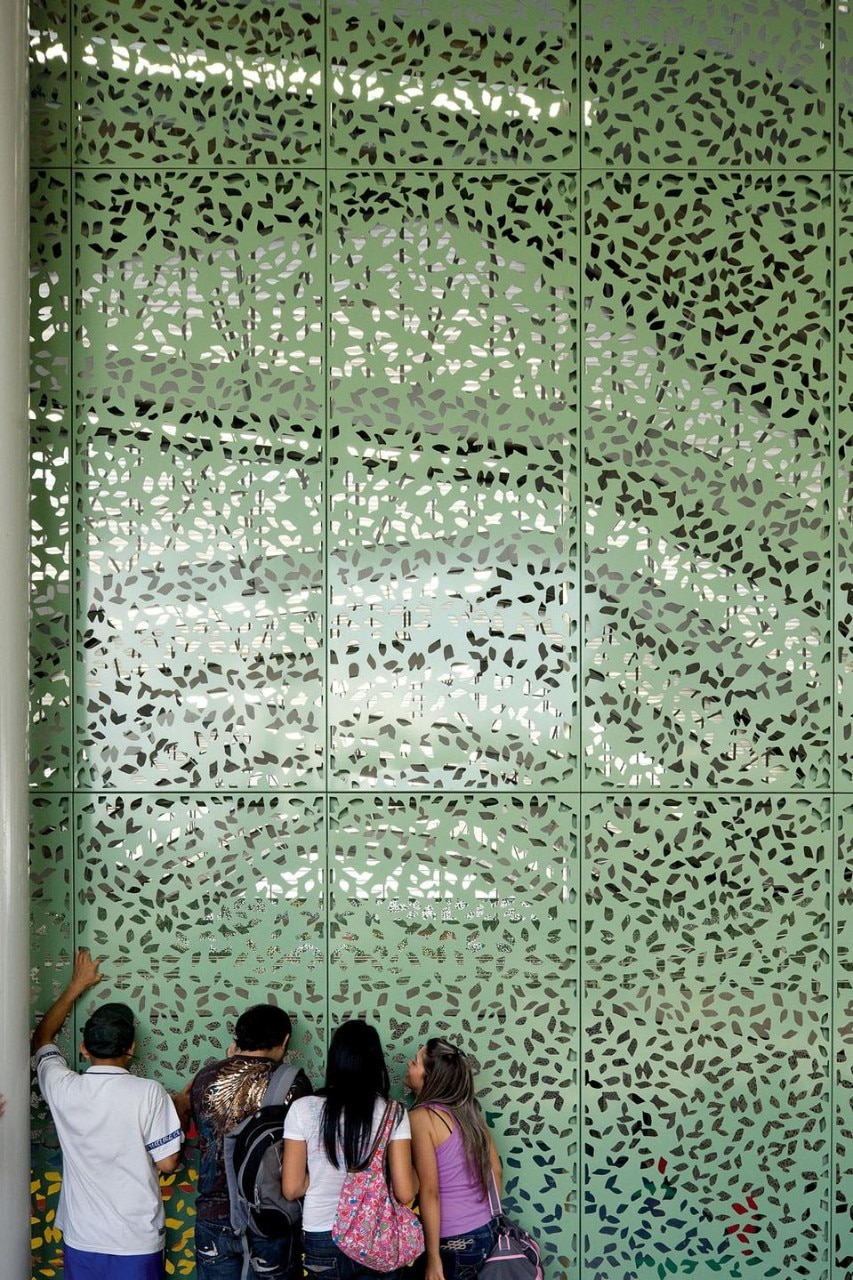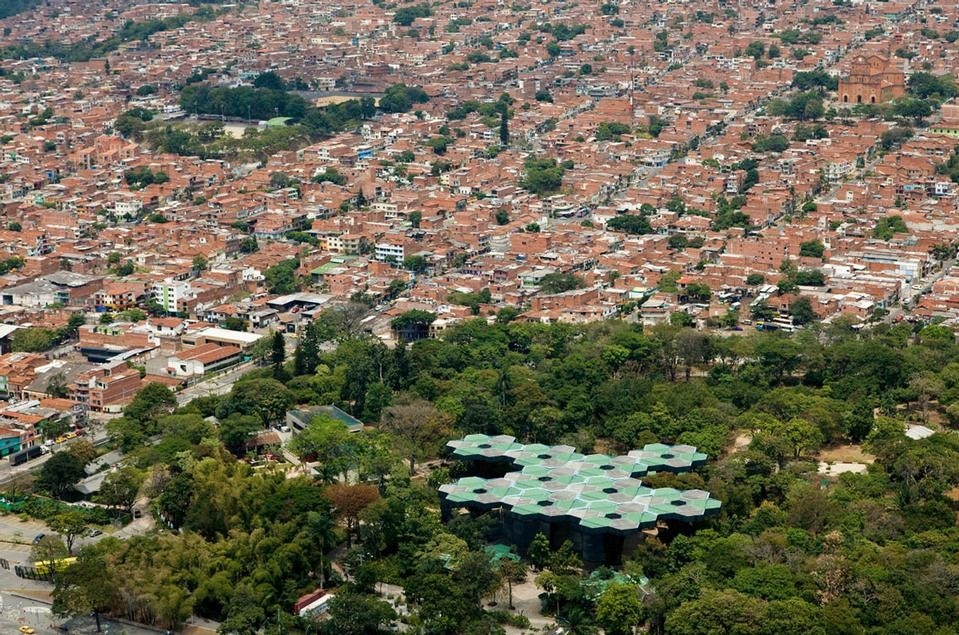Good examples of the way in which the new urban space of Medellín is being constructed, and of the network of architects designing it, can be seen in the Orquideorama built for the city's botanical gardens, the sports facilities and the water sports complex for the 9th South American Games in the Sports Unit. The three groups of architects behind these projects had either worked together on other initiatives beforehand or have done so since. For example, as well as working with Camilo Restrepo, Felipe Mesa (Plan:B Arquitectos) has also been a partner of Giancarlo Mazzanti and is now producing a book with Paisajes Emergentes, who in turn have designed an exhibition with Restrepo and proposed several bids with Mazzanti, who in turn has carried out projects and collaborated with all the others. This provides an illustration of the chiefly unplanned network that exists between a large group of local architects with shared intentions. A kind of collective intelligence being built up around the ideas of Medellín and architecture, it goes beyond official cooperatives and organisations as well as underpinning a substantial number of actions taking place in Medellín and other cities.
The three building projects in question – the Orquideorama, the sports venue and the water sports complex – have helped to open up parts of the city that previously acted like private enclaves, making them accessible to the broader public. These three architectural initiatives form powerful landscapes that take a fresh look at the geographical and environmental features of this tropical city without getting bogged down in ingenuous metaphors or navel-gazing discourse. There are very clear connections between the Orquideorama and the sports venue: both act as canopies or shelters, with urban life flowing naturally beneath them in conjunction with their predefined and fixed programmes and uses. Although the terms and conditions of both tenders called for buildings that would serve as boxes or containers, the architects in each case delivered something more like foliage.
The architecture of the Orquideorama and the sports venue is also derived from parallels or efforts to draw closely on the organisational patterns found in living systems. Built alongside the trees of the botanic gardens, the Orquideorama follows two patterns in the way it is arranged: the forest and its foliage and the hexagonal efficiency of a honeycomb. A bunch of enormous flowers rather than an immutable mass or volume, this group of metal trees covered in wooden bars creates an irregular, leaf-like surface area around the six sides of its perimeter. These new trees amplify the garden's existing atmosphere, filter light, draw in water and open up horizontally to the landscape of the botanic gardens. The pavilion forms part of the forested area and the garden, being able to expand or contract within this area, or support plant life.
There is a double pattern in the sports venue too – with a horizontal breeze flowing through it set against the mountainous backdrop. The visitor is faced with a pattern of tightly packed bars, floorlevel bands and horizontal surfaces that turn into airborne lines, floating above the others, moving from one side to another as if they were fibres of a larger fabric that we cannot see. The project is a channelling of beams, energy lines or vectors that come together under a sheltering structure. At the same time, however, the elevation is a mountainous profile combining skeleton and musculature. Inside and outside are interconnected, forming a continuous body without any great distinction. Inside the stadium, the lines swell without losing their fluidity or contact with the exterior. This shelter controls the shade, lighting, rainwater and the addition or expansion of volume. In its form, the sports venue is a protrusion rising up from the ground, but also an overarching, floating shelter. Between them, these patterns play a juggling act between disintegration and growth. Both of these projects are arrangements that are waiting to spread out, change, diminish, repeat themselves, be disassembled or die. They are patterns that can be amplified and connected without losing their depth. These are pieces of architecture that maintain their form in suspension, anticipating new users and activities, and therefore extending their purpose – becoming increasingly vital and latent.
The water sports complex, although it is very different, behaves in a similar way to the Orquideorama and the sports venue. Its architecture frees it from the ground by means of ramps, basements, courtyards and underground passageways, with the only volume to emerge above ground level being the part that supports the spectators' seating. The complex itself remains below the surface of the water and gardens, creating space through its clearly planned walkways, in which each movement has been designed.
The architecture in the water sports complex is submerged and hidden behind water, below ground level, or barely rising above it. This piece of basement-level architecture almost seems like a piece of land art, with its labyrinthine pathways and architecture like furrows in the earth. The interiors are barely defined subterranean spaces, with water-covered walls, irregular concrete, or glass-like and watery areas. Occupying this underworld, some parts of which rise up to street level, has become a ritual. However, the arrangement of relationships implies a purpose that will displace the water, take over pools, make use of gardens, invade the courtyards below ground level, or rise up to contemplate it from up high. Rather than watching the competition in a cube of water, spectators are positioned to look out over an aquatic landscape, a small Atlantis rediscovered. These three projects are based on a single shared principle – that the order set by architecture should give rise to new ways of living. Miguel Mesa R.
